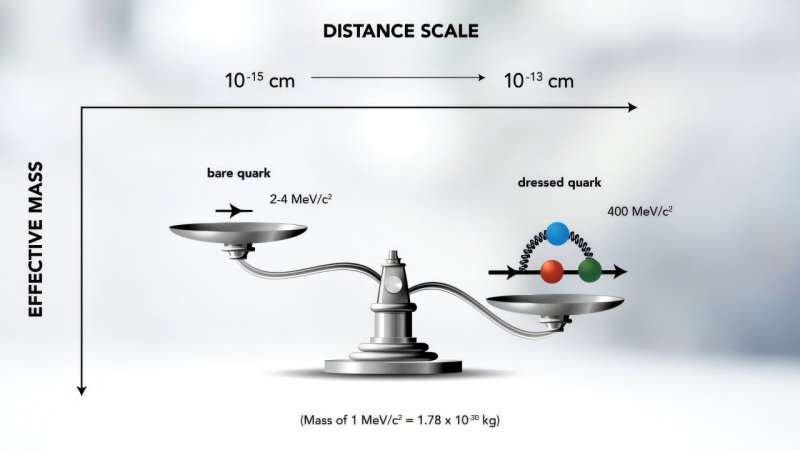
Research at the Thomas Jefferson National Accelerator Facility has advanced understanding of how the majority of the universe’s visible mass is generated, specifically focusing on the emergence of hadron mass. This work addresses a longstanding question in nuclear physics: why do protons and neutrons, which are composed of quarks, possess a mass significantly greater than that of the individual quarks themselves?
The theoretical foundation lies in the strong interaction, described by quantum chromodynamics (QCD). While quarks acquire a minimal mass through the Higgs mechanism—validated by experiments at the CERN Large Hadron Collider and leading to the Nobel Prize awarded to Peter Higgs in 2013—the contribution of this mechanism to proton and neutron masses is less than 2%, according to physicist Victor Mokeev. He emphasizes that the substantial portion of hadronic mass arises from emergent phenomena within QCD.
Understanding Emergence of Hadron Mass
Recent studies at Jefferson Lab have provided unprecedented insights into the mass-generating processes of hadrons, which include protons and neutrons. The emergence of hadron mass (EHM) is rooted in the energy stored in the fields of quarks and gluons. Over the past decade, researchers have employed a QCD-based approach, specifically the continuum Schwinger method (CSM), to analyze nearly 30 years of experimental data.
This comprehensive investigation culminated in findings featured in a special edition of the journal Symmetry. According to Daniel Carman, an experimental nuclear physicist at Jefferson Lab, the collective efforts represent a significant milestone in understanding the mechanisms behind hadron mass. He stated, “This is more than what you’d see from a single experiment or set of experiments.”
QCD illustrates the dynamics of quarks and gluons, the fundamental constituents of matter. A key characteristic of the strong force is gluon self-interaction, which plays a crucial role in creating the diverse properties of particles. Mokeev noted, “Without gluon self-interaction, the universe would be completely different,” highlighting its importance in real-world hadron phenomena.
Experiments and Future Directions
At the Continuous Electron Beam Accelerator Facility (CEBAF) at Jefferson Lab, high-intensity electron beams are directed onto nuclear targets to study hadrons. The upgraded CEBAF Large Acceptance Spectrometer for 12 GeV (CLAS12) has been instrumental in these investigations, enabling scientists to identify particles produced when electrons scatter off protons.
Data from experiments using CLAS and CLAS12 allow researchers to examine the structure of protons and their excited states. This information can be compared with theoretical predictions from the CSM, facilitating a deeper understanding of the dynamics of quarks and gluons. Carman emphasized the collaborative nature of this work, stating, “You need all of these different contributors working together in close collaboration to get at the physics we’re trying to uncover.”
Looking ahead, Mokeev acknowledged that further experiments will enhance the understanding of hadron mass. Previous studies during the 6 GeV era of CEBAF explored roughly 30% of hadron mass generation. Ongoing research in the current 12 GeV era aims to expand this coverage to approximately 50%. Future experiments with higher-energy electron beams are expected to provide complete coverage of the distance domain where the dominant portion of hadron mass emerges.
As Mokeev stated, “When we get this information from the data of future experiments, we will be able to map out the full range of distances where the dominant part of hadron mass and structure emerge.” This ongoing research promises to deepen the scientific community’s understanding of the fundamental building blocks of matter and the forces that govern their behavior.







